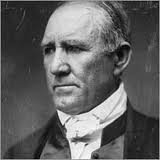
Cream cheese is a soft, usually mild-tasting fresh cheese made from milk and cream. Stabilizers such as carob bean gum and carrageenan are often added in industrial production.
The U.S. Food and Drug Administration defines cream cheese as containing at least 33% milk fat with a moisture content of not more than 55%, and a pH range of 4.4 to 4.9. Similarly, under Canadian Food and Drug Regulations cream cheese must contain at least 30% milk fat and a maximum of 55% moisture. In other countries, it is defined differently and may need a considerably higher fat content.
Cream cheese is not naturally matured and is meant to be consumed fresh, so it differs from other soft cheeses such as brie and Neufchâtel. It is more comparable in taste, texture, and production methods to Boursin and mascarpone.
Origin
United States
Around 1873 William A. Lawrence, a dairyman in Chester, New York, was the first to mass-produce an unripened fresh cheese known generically as cream cheese. In 1872, he began manufacturing Neufchâtel cheese. By adding cream to the process, he developed a richer cheese that he called “cream cheese”. In 1877 Lawrence created the first brand of cream cheese: its logo was a silhouette of a cow followed by the words "Neufchatel & Cream Cheese".
In 1879, to build a larger factory, Lawrence entered into an arrangement with Samuel S. Durland, another Chester merchant. In 1880, Alvah Reynolds, a New York cheese distributor, began to sell the cheese of Lawrence & Durland and called it "Philadelphia Cream Cheese".
Histories that imply the cheese was produced in Philadelphia, Pennsylvania, or Philadelphia, New York, are incorrect. By the end of 1880, faced with increasing demand for his Philadelphia-brand cheese, Reynolds turned to Charles Green, a second Chester dairyman, who by 1880 had been manufacturing cream cheese as well. Some of Green's cheese was also sold under the Philadelphia label.
In 1892 Reynolds bought the Empire Cheese Co. of South Edmeston, New York, to produce cheese under his "Philadelphia" label. When the Empire factory burned down in 1900, he asked the newly formed Phenix Cheese Company to produce his cheese, instead. In 1903, Reynolds sold rights to the "Philadelphia" brand name to the Phenix Cheese Company, which was under the direction of Jason F. Whitney, Sr. (which later merged with Kraft, in 1928). By the early 1880s Star cream cheese had emerged as Lawrence & Durland's brand, and Green made World and Globe brands of the cheese. At the turn of the 20th century, New York dairymen were producing cream cheese sold under such other brands as Triple Cream (C. Percival), Eagle (F.X. Baumert), Empire (Phenix Cheese Co.), Mohican (International Cheese Co.), Monroe Cheese Co. (Gross & Hoffman), and Nabob (F.H. Legget).
Cream cheese became popular in the Jewish cuisine of New York City, where it is commonly known as a "schmear". It is used on bagels and is the basis of the bagel and cream cheese, a common open-faced sandwich. Lox, capers, and other ingredients are often added to this dish. The basic bagel and cream cheese have become a ubiquitous breakfast and brunch food throughout the United States.
Industrial cream cheeses, such as "Philadelphia", are the most commonly found varieties. However, traditional fresh cream cheeses not containing stabilizers or preservatives maintain a presence in the Canadian market, such as the cream cheese sold by the Western Dairy division of Gay Lea and Liberte Inc.
American cream cheese tends to have lower fat content than elsewhere, but "Philadelphia" branded cheese is suggested as a substitute for petit suisse by Julia Child.
- 1 1/2 cups graham cracker crumbs
- 1/4 cup sugar
- 1/2 cup (1 stick) butter, melted
- 1 (8-ounce) package cream cheese, softened
- 1 (14-ounce) can sweetened condensed milk
- 1/2 cup fresh lemon juice
- 1 teaspoon finely grated lemon zest
- 2 cups frozen whipped topping, thawed
- Coat an 8-inch square baking dish with cooking spray. In a medium bowl, combine graham cracker crumbs, sugar, and butter; mix well. Press crumb mixture firmly into prepared baking dish and refrigerate until ready to fill.
- In a large bowl, beat cream cheese and condensed milk until smooth. Beat in lemon juice and lemon zest. Stir in whipped topping just until mixed. Pour into graham cracker crust.
- Refrigerate 6 hours, or until filling is firm. Slice into 2-inch squares and serve.
Always observed on March 2nd, National Old Stuff Day gives notice to all that old stuff and encourages you to try something new. Well, maybe not ALL the old stuff, but some of it. It’s a day to break out of the old routines and experience new ones.
We have all heard the saying, “same old, same old.” Well, this is the day to do things differently. There is no limit to how you can change up your day. Take a moment to recognize the things that you do each day. Is there a better, more efficient way? Examine the route you take to work. Evaluate how you fold laundry. Perhaps there’s an improved way of cleaning windows.
Maybe it’s just a way to brighten your day or someone else’s day. Whatever it is, strive to make the day new, not the same old day it was yesterday.
HOW TO OBSERVE
Approach the day with a new attitude. Consider alternatives to each of the choices you make each day. Is there a better or equal alternative? Try making a new choice when available.
Some other suggestions for ridding yourself of some old stuff and ways include:
- use an old item for a new use
- look at things from a new perspective
- throw out all you know about something and relearn it all anew
- take something old and freshen it up – clean it, paint it, fix it, give it a hair cut
- order a small instead of a large















